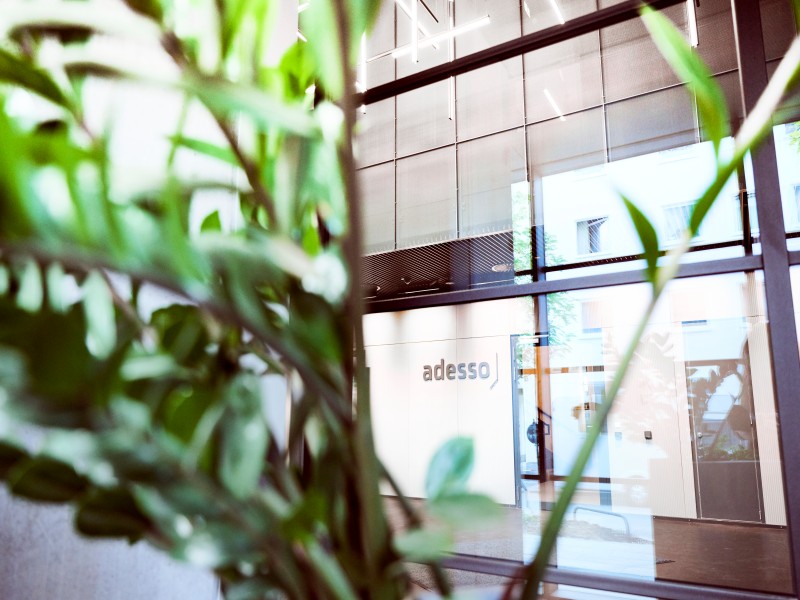27. September 2023 By Melanie Truhöl, Ellen Volkert and Julia Schönauer
New agile – a balanced, hybrid work model
How we work has changed fundamentally in recent decades. Automated processes, less manual intervention and new job profiles are some of the products of digitalisation. Because of globalisation, teams now work together across multiple sites, with information playing an important role. Freedom, community and self-determination are now at the top of the list of worker needs. This trend was accelerated by the COVID-19 pandemic. These changes require new forms of work in companies that are focused on the evolving needs of employees. The term used to describe this is new work.
Agile working is a form of new work. Agile working methods are designed to help companies develop the flexibility they need to react to change. A host of agile methods, including Scrum, design thinking and agile shadowing, are part of agile working. The aim here is to eliminate rigid structures at companies and foster forward-looking, independent action by employees.
An agile mindset and agile tools can support staff in developing this mentality. Employees who have an agile mindset are intrinsically motivated and like to take on responsibility. They make decisions, learn from their mistakes and are able to adapt to new situations very quickly. This allows agile organisations to optimally respond to new challenges and be proactive. They are supported by agile tools provided using project management approaches that generally take the form of Scrum, Kanban or other new agile methods.
Scrum events, rituals and good practices
In the new hybrid work models, sprint changes and team rituals take on a whole new meaning and need to be re-examined to determine if they are practical.
Here is a list of known events and rituals in the Scrum context:
- Daily scrums
- Retrospectives
- Reviews
- Sprint planning
- Backlog refinement
Not all of these events are suitable for remote implementation. For instance, on-site events only make sense if all team members are present and take part. A combination of on-site and remote events is not recommended since it is difficult to meet the needs of everyone involved.
The type of event (online or in-person) depends on of the nature of the event. An online event is just as well suited for dailies as it is for the review, where stakeholders who have logged on also take part in order to get feedback on the work results.
Sprint planning and backlog refinement can be done either online or in person. The Scrum Master is responsible for selecting suitable tools and methods, taking into account the approach chosen to carry out the project. There are clear advantages to holding the sprint retrospective as a face-to-face event. This way, it is possible to actively take part, move around the room and brainstorm on individual points relating to the joint project on a more intimate and personal level, making it possible to break down barriers to communication.
The team decides on its own on the frequency and form of the events. Team members can schedule regular slots for events as well as ad-hoc meetings to address specific problems and find solutions to them. It is important to consider whether people who may not be able to be on site are needed in order to find solutions.
Opportunities presented by and obstacles to new work
Having the flexibility to choose where employees work allows them to achieve a better work-life balance. For example, it makes it easier for them to squeeze in a doctor’s appointment or schedule an appointment with a plumber or builder during working hours. A further plus for employees is the option of workation, which makes it easy to combine holidays and work .
An increase in remote working and new work also opens up opportunities for employers. Because employees are in the office less and at different times, a company can reduce the amount of office space it needs, which leads to lower costs. Since customers are also working more often from home, this means fewer business trips and less travel expenses. Another advantage is that it makes it easier to work with people in the region, outside the region or even outside the country.
However, new work also involves certain obstacles for employees and companies that need to be overcome. Since not all employees have a home office or sufficient space for office furniture, many work at non-ergonomic workstations at home. This can have a negative impact on their health and decrease motivation. It is also more difficult to clearly separate their work and private lives as the boundaries between the two become increasingly blurred.
Time also has to be set aside for social interaction, since you are not going to randomly bump into a colleague and chat at the coffee machine if you are working from home. A virtual coffee break is a good example of this.
The hybrid work model is the main challenge facing companies. In the case of training seminars or similar events, it is important to take extra care to ensure that staff both onsite and offsite are actively engaged with the content and do not lose interest. New agile approaches can also offer novel ways to onboard new employees. Beyond that, there is the risk that teams and employees become alienated if a large number of employees work remotely offsite. This could lead to a decline in employee loyalty because they do not feel a bond or connection to the company, making them more receptive to taking a job at one of the company’s competitors.
Conclusion
New agile cannot solve every problem, but if you take a considered approach to selecting the right combination of platforms, tools and techniques, you can address obstacles as they emerge and take advantage of opportunities. Especially when it comes to onboarding new employees who have little experience working in an agile environment, it is a good idea to employ new agile methods. With agile shadowing, for example, an experienced project member accompanies the newbie as they gradually get to know the ins and outs of the project and assigns tasks to them. It is a great experience for the coach and newbie, which they both can both grow and learn from.
You can find more exciting topics from the adesso world in our blog articles published so far.
Also interessting:

